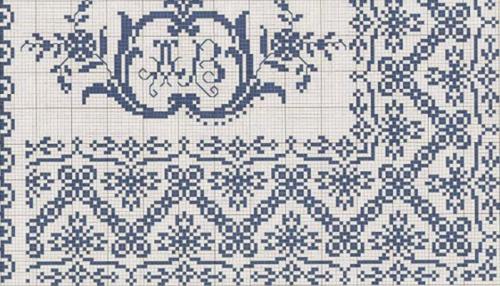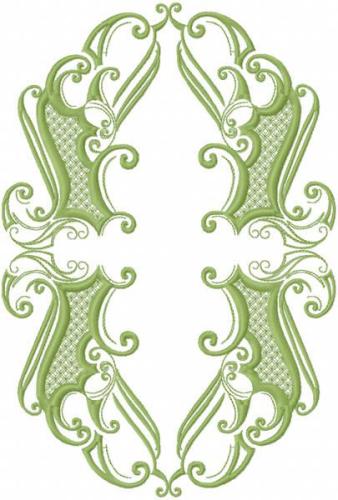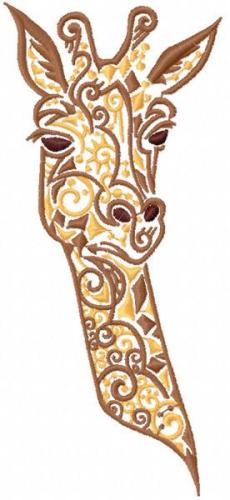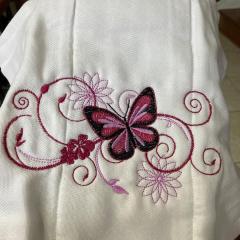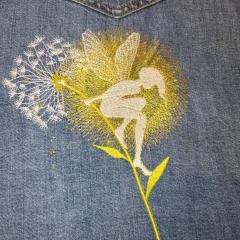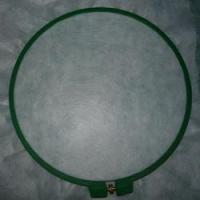
Original text by Marina Belova
Correct hooping and rightly chosen underlay — these are the two most important things that contribute to the quality of the embroidery. My own experience tells me that however good the embroidery design is, hooping will be a most crucial aspect. The main function of hooping is to hold both the fabric and the stabilizer pulled tight during the embroidery. What is the difficulty, one would think, in securing both the fabric and stabilizer between the two rings of the hoop, without displacing either one of them?
There is a vast amount of materials covering various nuances of hooping on the Web. Even I have already written about embroidery without hooping and also about the testing of the quality of the hooping. But no matter how much information there is on the subject, the question remains open, because there is a set of hooping tricks for every type of the fabric. Not to mention lots of interesting hooping devices (hoop station, hooping aid device, magnetic holding system, hooping fixture and so on). that were invented to aid the embroiderer. The subject of framing calls for a separate article.
Nevertheless, here are my two cents on how to hoop the fabric (or item). I will begin with the most basic rules.
There are several rules of manual hooping known to everyone and, therefore, banal, that should nevertheless be obeyed:
- Always mark your item (draw dots or lines, along which your embroidery will be situated).
- Find the right type of stabilizer that goes with that particular kind of fabric.
- A sheet of stabilizer should slightly outsize the hoop.
- Choosing the hoop size, pick the one that is suitable for this particular design, the smallest one possible. Round hoops are considered the best.
- And in case they are made of wood, and not plastic, even better.
- Don't forget to trace the outline before starting the embroidery, making sure that there is enough space for the presser foot so that it will not touch the hoop.
- Always hoop the fabric together with the stabilizer.
- Use a stabilizer with an adhesive side or a temporary spray adhesive whenever possible. This will prevent the stabilizer from shifting in the hoop, and from pulling the fabric too tight in case it is very stretchy.
- Adjust the tension according to the fabric thickness by turning the screw (or sometimes a wheel; it's not the same with different hoops) before hooping.
- One should hoop the fabric on a flat surface. This sounds so obvious, but it is true.
- The inner and outer rings should fit without effort, but not too easily. The fabric should be tight, but not stretched in the hoop, and the fibers should not be distorted. The alignment marks on the hoop and the fabric should match. As for the need to tug the fabric in the hoop, the question remains open for the debate. I've seen a huge variety of opinions on the subject, and they differ from each other greatly. I think it depends on the type of fabric used, and also on your experience.
- Do not adjust the screw on the outer ring after hooping. It may damage the fibers. And it will result in pulling the fabric around the screw, which may have the impact on the quality of the embroidery.
- Test the quality of the hooping. If you don't like the result, unhoop and start all over again, beginning with the fitting of the rings.
- Digitize and stitch additional basting stitches. They will hold the fabric and the stabilizer together. If the fabric allows that, of course.
- In order to avoid hoop marks (also known as hoop burn), you may wrap the hoop in the soft fabric or place an extra material under the outer hoop with the window the size of the design in it. Read more about wrapping of the hoops, adjusting the gap and other details in my article called "Hooping minutiae".
One should remember that the manual hooping does not tolerate any haste, requires sufficient skill, but can be trained to perfection with the right amount of practice. This article will tell you how to make the hooping easier with the help of hooping devices that can be made by everyone.
Edited by Irina
-
 1
1
-
 2
2


